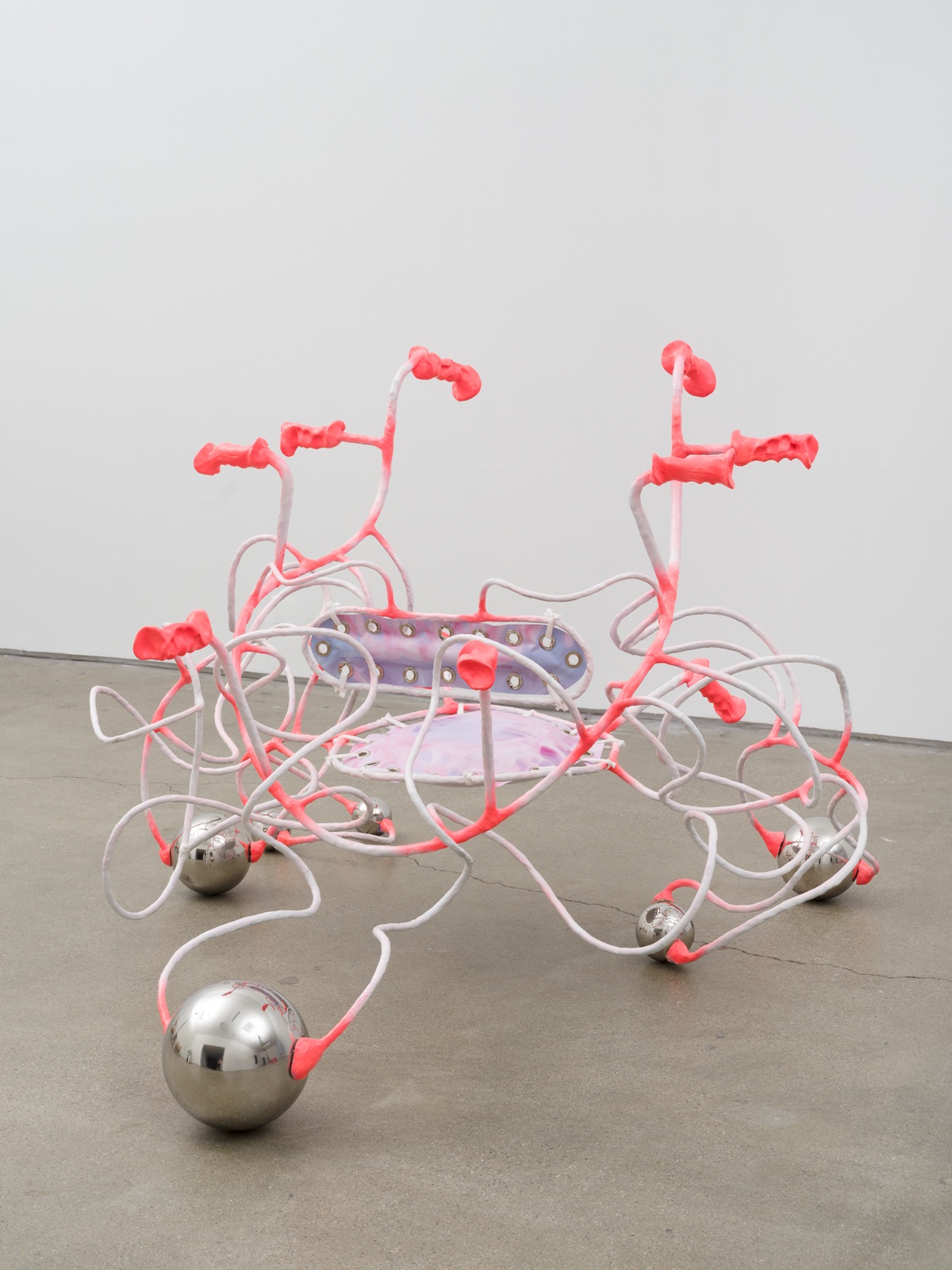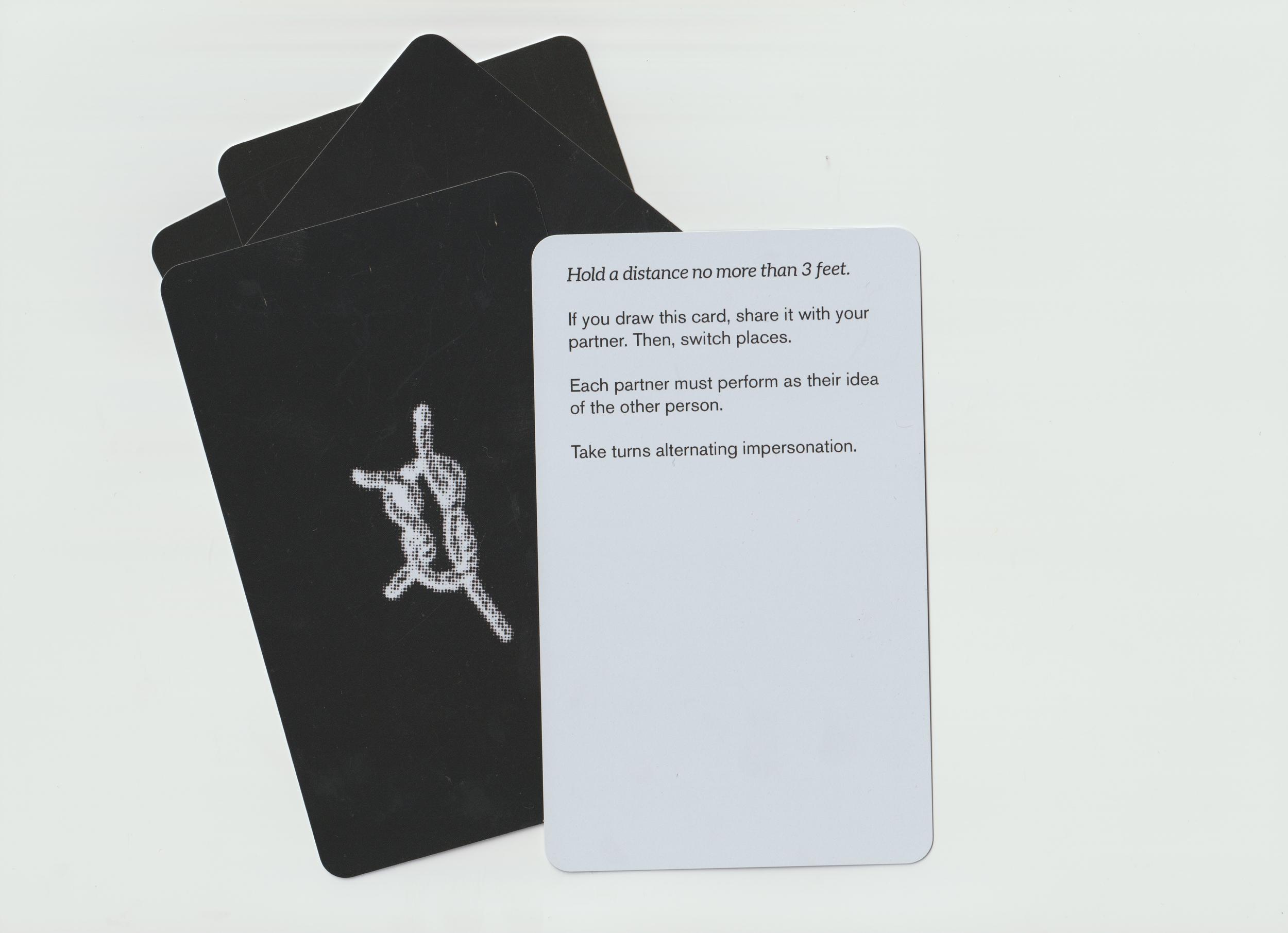 Nat Decker, Weak in the Knees (Poly-pusher), 2024. Steel, chrome ball, epoxy, vinyl, gauze, and paint. Courtesy the artist
How do you throw a brick through the window…
Nat Decker, Weak in the Knees (Poly-pusher), 2024. Steel, chrome ball, epoxy, vinyl, gauze, and paint. Courtesy the artist
How do you throw a brick through the window… is a multi-pronged research initiative leading to a two-venue exhibition—at
Tufts University Art Galleries (TUAG) and the
John Michael Kohler Arts Center (JMKAC)—that follows artist and activist Johanna Hedva’s question: “How do you throw a brick through the window of a bank if you can’t get out of bed?” (from “Sick Woman Theory,” 2016). Rooted in Hedva’s essay, the exhibition explores how individuals with disabilities protest within a world shaped by ableism, foregrounding art practices that imagine structural resistance and alternative forms of world-building.
The exhibition presents new commissions and recent works by Yani aviles, Chloe P. Crawford, Nat Decker, Jeff Kasper, Carly Mandel, Jeffrey Meris, and Libby Paloma. Mandel’s
Waiting Room (2025) is an abstracted bead maze of the kind seen in doctors’ offices to calm waiting children. The sculpture gestures towards coping mechanisms and forms of resistance within institutional spaces. In the installation
The Odyssey (2025), Crawford documents her insurance claims process to procure a new electric wheelchair, a work that manifests as a contemporary journey through privatized healthcare. Decker’s installation
WE KEEP US SAFE (2025) features a power chair covered in chainmail with a cane-sword, referencing the care and support the artist received while navigating a protest on a university campus using their power chair.
Artists, activists, and scholars such as Amanda Cachia, torrin a. greathouse, and Mev Luna will contribute to both the publication and the programming, with the programming facilitating dialogue with disabled community members local to each venue.
 Jeff Kasper, wrestling embrace (deck), 2017–18. Deck of 54. Courtesy the artist.
Jeff Kasper, wrestling embrace (deck), 2017–18. Deck of 54. Courtesy the artist.
Laurel V. McLaughlin, PhD, is a writer, curator, art historian, and educator, working as Curator and Director of the Collective Futures Fund at Tufts University Art Galleries. Her curatorial work focuses on contemporary research-based sculpture, installation, new media, and social practice works concerning formal liminalities, globalized migration, and ecological networks. McLaughlin has curated the exhibitions Mira Dayal: conjunctions (2025); Ulises: Assembly (2024); Waste Scenes (featuring Maia Chao and Fred Schmidt-Arenales) (2024); Bergman & Salinas: Against the General Good/ Contra El Bien Generalxi (2022); and Emilio Rojas: tracing a wound through my body (2021), among others. Her curatorial work has been supported by the Terra Foundation for American Art, the Helen Frankenthaler Foundation, and the Dutch Consulate of New York. She is currently undertaking a 2022 Andy Warhol Foundation Curatorial Research Fellowship.
Tanya Gayer is Associate Curator at the John Michael Kohler Arts Center in Sheboygan, Wisconsin. Her curatorial projects and research examine history-making processes embedded in archives, databases, and algorithmic categorizations to consider their impact on the formation of identity and culture. Recent exhibitions include: Familiar Texture: The Fibers of Childhood and Home (2025); Sarah Rowe: Water Ledger (2025); Workplace: Justin Favela (2024); Sunny Leerasanthanah: Naturalization (2023); Morehshin Allahyari: ماه طلعت Moon-faced (2023); and Angela U. Drakeford: In bloom at the end of the world (2022). She has contributed catalogue essays for René Treviño: Stab of Guilt (2024, The Ruth and Elmer Wellin Museum of Art, Clinton, NY); Alexandra Robinson: Delimitations, or words to live by (2022, Women & Their Work, Austin, TX); Rhonda Holberton: Still Life (2017, CULT Aimee Friberg, New York); and Martin Wong: Painting is Forbidden (2015, CCA Wattis Institute for Contemporary Arts, San Francisco), among others.
Published November 12, 2025.
 Nat Decker, Weak in the Knees (Poly-pusher), 2024. Steel, chrome ball, epoxy, vinyl, gauze, and paint. Courtesy the artist
Nat Decker, Weak in the Knees (Poly-pusher), 2024. Steel, chrome ball, epoxy, vinyl, gauze, and paint. Courtesy the artist